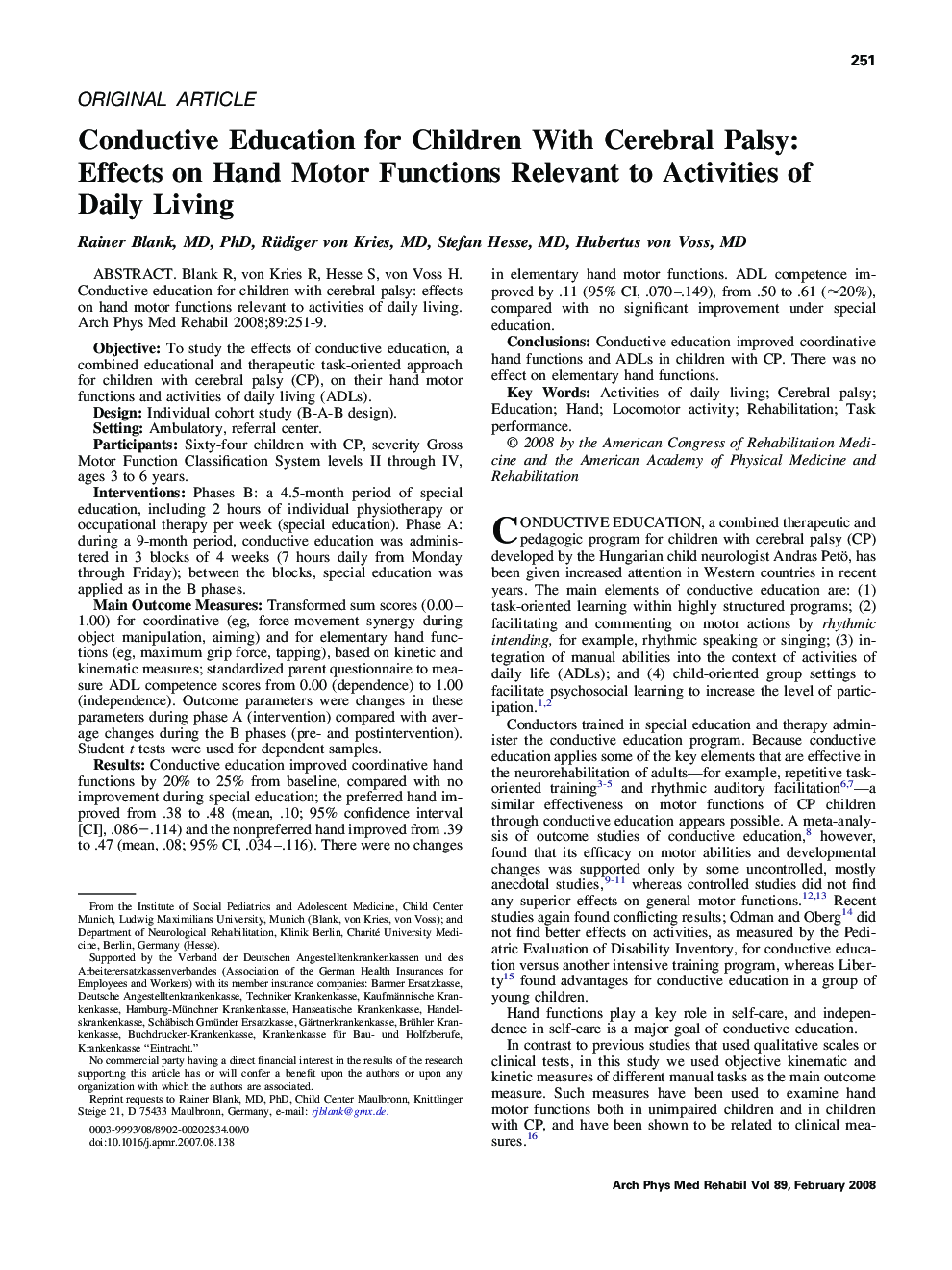| کد مقاله | کد نشریه | سال انتشار | مقاله انگلیسی | نسخه تمام متن |
|---|---|---|---|---|
| 3452036 | 1595783 | 2008 | 9 صفحه PDF | دانلود رایگان |

Blank R, von Kries R, Hesse S, von Voss H. Conductive education for children with cerebral palsy: effects on hand motor functions relevant to activities of daily living.ObjectiveTo study the effects of conductive education, a combined educational and therapeutic task-oriented approach for children with cerebral palsy (CP), on their hand motor functions and activities of daily living (ADLs).DesignIndividual cohort study (B-A-B design).SettingAmbulatory, referral center.ParticipantsSixty-four children with CP, severity Gross Motor Function Classification System levels II through IV, ages 3 to 6 years.InterventionsPhases B: a 4.5-month period of special education, including 2 hours of individual physiotherapy or occupational therapy per week (special education). Phase A: during a 9-month period, conductive education was administered in 3 blocks of 4 weeks (7 hours daily from Monday through Friday); between the blocks, special education was applied as in the B phases.Main Outcome MeasuresTransformed sum scores (0.00–1.00) for coordinative (eg, force-movement synergy during object manipulation, aiming) and for elementary hand functions (eg, maximum grip force, tapping), based on kinetic and kinematic measures; standardized parent questionnaire to measure ADL competence scores from 0.00 (dependence) to 1.00 (independence). Outcome parameters were changes in these parameters during phase A (intervention) compared with average changes during the B phases (pre- and postintervention). Student t tests were used for dependent samples.ResultsConductive education improved coordinative hand functions by 20% to 25% from baseline, compared with no improvement during special education; the preferred hand improved from .38 to .48 (mean, .10; 95% confidence interval [CI], .086−.114) and the nonpreferred hand improved from .39 to .47 (mean, .08; 95% CI, .034–.116). There were no changes in elementary hand motor functions. ADL competence improved by .11 (95% CI, .070–.149), from .50 to .61 (≈20%), compared with no significant improvement under special education.ConclusionsConductive education improved coordinative hand functions and ADLs in children with CP. There was no effect on elementary hand functions.
Journal: Archives of Physical Medicine and Rehabilitation - Volume 89, Issue 2, February 2008, Pages 251–259